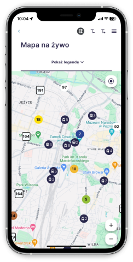Designing a citizen-oriented future for cities and regions

Today, smart city strategies are evolving with service design at their core, placing citizens at the heart of urban transformation.
A widely accepted definition of service design is offered by Birgit Mager, a key figure in the field and now President of the Service Design Network: “Service design is a multidisciplinary approach to designing services, focusing on creating both tangible and intangible elements to improve the user’s experience, while considering the provider's capacity” (Designing Services with Innovative Methods, 2009).
Service design is a powerful tool employed by local authorities to leverage digitalisation for enhancing communication and engagement with citizens, the end users of new services.
This story highlights three trailblazing cities and urban regions: Timișoara (Romania), Poznań (Poland), and Île-de-France, that have embraced smart services with a clear focus on citizens’ involvement in the making, leading to a very tailored offer to the specific needs and preferences of their residents.
1. Timișoara: Co-creating services with citizens (BEST DIH)
In Timișoara, the Smart City Strategy was developed through a collaborative effort involving over 400 professionals, local businesses, and citizens. With a focus on service design, the city aimed to create digital services that truly enhance residents' lives. Involving stakeholders, particularly citizens, from the early stages of design fosters a sense of ownership, encourages collaboration, and increases the likelihood of creating solutions that are practical and effective.
The Timișoara model, guided by the motto "Innovation made accessible to everyone," sets clear objectives ranging from simplifying interactions with local authorities to launching a digital identity platform. This citizen-driven approach demonstrates how a deep understanding of users’ needs can be transformed into user-friendly solutions, making public services more accessible. Moreover, this approach enhances transparency and trust between service providers and the public, as citizens feel their input is valued in shaping the services they will ultimately use.
Meet Gabriela, a 32-year-old resident who had long been frustrated by the city’s outdated digital infrastructure. She decided to attend a co-design workshop organised by the City Council, and she actively contributed to the exchanges revolving on Timișoara’s digital services.
Months later, her input was considered with the launch of the digital identity platform, revolutionising how citizens like Gabriela interact with the city. No more long waits at city hall, now Gabriela simply logs in from her phone to access services with just a few clicks.

2. Poznań: Data-driven service design (OD4GROWTH)
The Smart City Poznań app was designed to bridge the communication gap between the city and its residents, addressing long-standing inefficiencies in how urban issues were reported and resolved. Before the app's launch, residents faced delays when reporting problems, such as damaged infrastructure, and had limited means to provide feedback or receive timely information from the city.
Two key digital innovations are highlighted in this good practice: the importance of open data and the role of citizen science.
Open data refers to publicly available datasets that can be freely used, updated, and shared by anyone. By making data accessible, local authorities promote transparency, foster innovation, and empower citizens and businesses to create value from the information.
Read our story spotlighting Veneto Region’s forerunning experience with Open data.
The second innovation is citizen science, where data is collected and analysed with the active participation of the community. Involving users in this way allows citizens to contribute directly to the day-to-day management and development of the city.
Meet Ewa, a 23-year-old student who used to find reporting city issues a frustrating experience. Now, with just a few taps on her phone, Ewa can easily report broken streetlights, flag illegal parking, and monitor real-time updates on her requests.
She’s also more involved than ever in shaping her community, participating in citywide surveys and using other participative tools provided by the app, such as the Social Advertising Inventory to report questionable ads. For Ewa, the app is more than just a tool, it's a gateway to actively contributing to and influencing the future of her city.
3. Île-de-France: Inclusive digital services for all (CDREUROPE)

The Île-de-France Smart Services Platform is a prime example of service design centred on accessibility, sustainability and collaboration with over 200 public-private partnerships. Offering more than 40 services, the platform empowers les Franciliens to manage a variety of tasks while promoting environmentally friendly practices such as soft mobility, waste management, and climate change adaptation. With inclusivity at its core, the platform ensures that even individuals with disabilities can navigate its features effortlessly.
With a "find your service in just a few clicks" approach and the collaboration of various local stakeholders (including cities, businesses, mobility providers, and energy suppliers), the platform allows citizens to shop locally, travel locally, and simplifies their daily tasks. One standout feature is "Bougeott," an innovative and free app that seamlessly combines physical activity with exploring the Île-de-France region, offering users an engaging way to stay active while discovering their local surroundings.
Meet Arnaud, a 46-year-old living in Issy-les-Moulineaux (Île-de-France), who recently used the platform’s tool to locate electric vehicle charging stations. The platform helped him quickly find nearby charging spots, saving time and making his commute more efficient. Arnaud particularly appreciated how easy and accessible the interface was, allowing him to easily navigate the app.
By using the platform, he was able to integrate more eco-friendly actions in his routines. One day, inspired by the app, Arnaud decided to try a car-free day using Bougeott. To his surprise, he discovered places he had never known about, despite having lived in the region his entire life.
These stories from Timișoara, Poznań and Île-de-France, demonstrate the transformative power of smart cities when designed with citizens in mind, paving the way for more connected, efficient, and inclusive urban environments.
